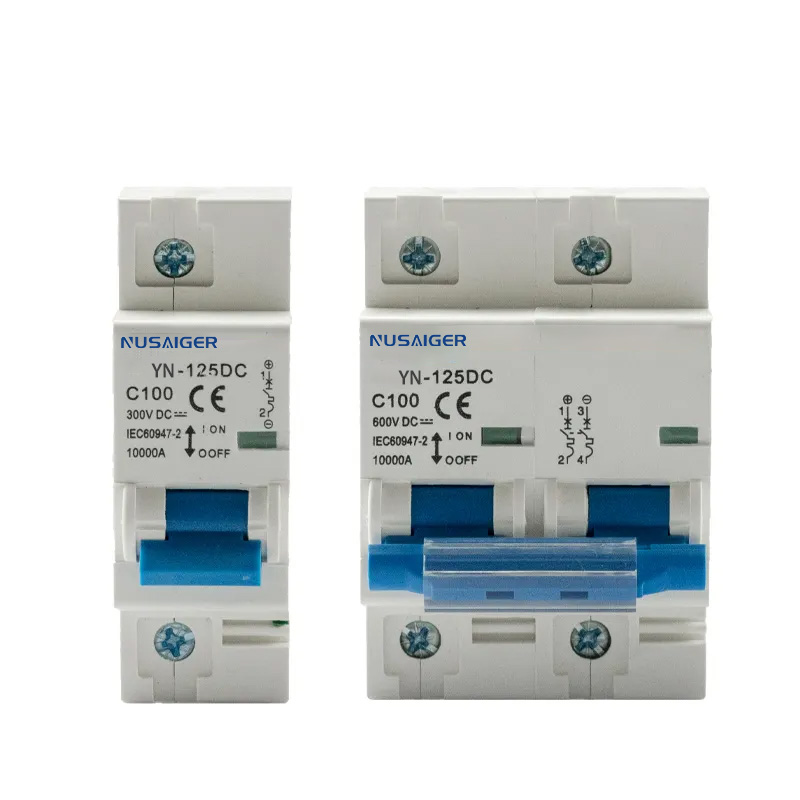Installation, Maintenance, and Troubleshooting of Miniature Circuit Breakers (MCBs)
1. Introduction
Miniature Circuit Breakers (MCBs) are essential devices in low-voltage electrical systems, providing protection against overcurrent and short circuits. Proper installation, regular maintenance, and troubleshooting are critical to ensuring their effective performance and prolonging lifespan.
2. Pre-Installation Considerations
Before installing MCBs, several factors must be evaluated:
- Load Assessment: Calculate total load current to determine appropriate MCB rating.
- Type of Load: Identify resistive, inductive, or capacitive characteristics for correct tripping curve selection (Type B, C, D, K, or Z).
- Voltage Requirements: Ensure the MCB voltage rating matches the system voltage (AC or DC).
- Environmental Factors: Consider ambient temperature, dust, vibration, and humidity, which may affect MCB performance.
- Compliance: Verify adherence to local electrical codes and international standards such as IEC 60898 or UL 489.
3. Installation Steps
Correct installation ensures operational safety and reliability:
- Power Isolation: Switch off the main supply before installation.
- Panel Preparation: Clean the panel and ensure DIN rails are properly mounted.
- MCB Mounting: Clip the MCB securely onto the DIN rail, ensuring correct orientation.
- Wiring: Use appropriate wire gauge and strip wires carefully. Insert wires into terminals and tighten according to manufacturer torque specifications.
- Labeling: Clearly label each MCB with circuit identification for easy maintenance.
- Testing: Verify continuity and ensure no short circuits exist before energizing.
4. Maintenance Best Practices
Regular maintenance extends MCB lifespan and prevents operational failures:
- Visual inspection for physical damage, discoloration, or dust accumulation.
- Check and tighten terminal screws periodically.
- Test the trip mechanism manually to ensure proper functioning.
- Clean the electrical panel and MCB enclosure to prevent moisture and dust ingress.
- Replace worn or damaged MCBs immediately to maintain safety.
5. Common Troubleshooting Scenarios
MCBs can encounter issues that require systematic troubleshooting:
- Frequent Tripping: Check for overload, short circuits, or inappropriate breaker type.
- MCB Fails to Trip: May indicate mechanical or internal fault; replace immediately.
- Buzzing Noise: Loose connections or high harmonic currents can cause buzzing; inspect and secure wiring.
- Overheating: Ensure rated current matches load and check for poor contact or environmental factors.
- Residual Current Problems: For MCBs integrated with RCDs, verify earth leakage paths and system grounding.
6. Safety Precautions
- Always isolate power before inspection or maintenance.
- Use insulated tools and wear personal protective equipment (PPE).
- Never bypass or modify MCBs, as this compromises protection.
- Follow manufacturer instructions and recommended installation procedures.
- Regularly update maintenance records for compliance and safety audits.
7. Advanced and Smart MCBs
Modern electrical systems increasingly integrate smart MCBs, offering enhanced functionality:
- Remote Monitoring: Track current load, trip status, and historical data via IoT platforms.
- Integration with Energy Management Systems: Optimize load distribution and detect inefficiencies.
- Predictive Maintenance: Early detection of abnormal load patterns prevents faults.
- Hybrid Protection: Combines overcurrent, short circuit, and residual current protection in one device.
- Compact Modular Designs: Enable easy panel upgrades and space optimization.
8. Industrial MCB Installation Considerations
Industrial environments demand careful planning and selection:
- High breaking capacity MCBs are essential for large motor loads and short-circuit risks.
- Three-phase MCBs protect industrial equipment and ensure balanced load distribution.
- Environmental factors like vibration, dust, and temperature extremes must be addressed.
- Regular calibration and maintenance schedules improve reliability in critical operations.
9. Residential and Commercial Best Practices
- Use Type B MCBs for lighting and general-purpose outlets in homes.
- Type C MCBs are suitable for offices, small shops, and equipment with moderate inrush currents.
- Combine MCBs with RCDs to enhance personal safety against electrical shocks.
- Document all circuits for maintenance and emergency response purposes.
10. Troubleshooting Real-World Cases
Case 1 – Overloaded Kitchen Circuit: Frequent trips occurred due to multiple appliances operating simultaneously. Solution: Upgraded to appropriately rated MCB and distributed loads across circuits.
Case 2 – Industrial Motor Short Circuit: High inrush current caused Type C MCB to trip repeatedly. Solution: Replaced with Type D MCB and added surge protection.
Case 3 – Residential Panel Buzzing: Loose terminals caused vibrations and heating. Solution: Tightened connections and verified wire gauge.
11. Long-Term Reliability Tips
- Ensure MCBs are rated for expected load and environmental conditions.
- Perform periodic thermal imaging to detect hotspots.
- Document and inspect panel connections regularly.
- Upgrade to smart MCBs for monitoring and early fault detection.
- Replace aged or damaged devices before failure occurs.
12. Future Trends in Installation and Maintenance
Electrical systems are evolving with smart grids and renewable integration:
- Wireless monitoring of MCBs reduces maintenance visits.
- Predictive analytics anticipate overloads and optimize energy usage.
- Integration with solar, battery storage, and EV charging circuits requires coordinated protection.
- Enhanced environmental protection ensures MCB reliability in harsh conditions.
- Modular and compact breakers allow future expansion without major panel redesign.
13. Conclusion
Proper installation, maintenance, and troubleshooting of Miniature Circuit Breakers are essential for safe, efficient, and reliable electrical systems. By following best practices, adhering to safety standards, and considering advanced smart solutions, electrical systems can operate optimally with reduced risk of failure and enhanced protection for both equipment and personnel.
Understanding the nuances of residential, commercial, and industrial MCB applications ensures that systems remain compliant, energy-efficient, and ready for modern electrical demands.



